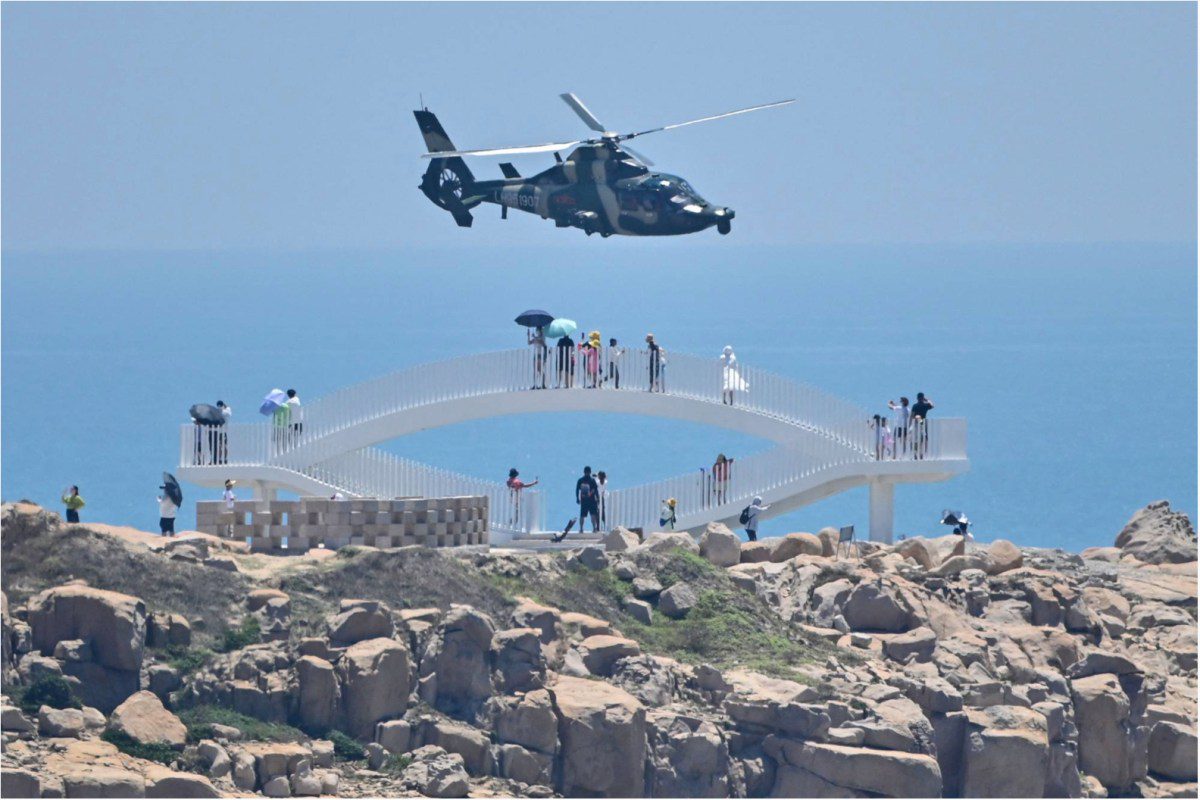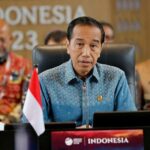Global Courant 2023-05-11 15:19:54
November 2013 in China declaration of an Air Defense Identification Zone (ADIZ) over the East China Sea reprimanded by the United States and its Northeast Asian allies.
It was seen as a counter-hegemony geopolitical move for check over disputed islands and first of multiple explanations designed to expand and strengthen Beijing’s regional influence dubious maritime sovereignty claims – particularly over the South China Sea.
Ten years later, Beijing seems more focused destabilize existing ADIZs of rival states then set additional zones yourself. The zone of Taiwan faces increasing Chinese violations, especially during moments of heightened tension. Japan And South Korea have also faced repeated Chinese violations of their ADIZs.
These violations are regularly published in defense white papersgovernment social media accounts And news reports. Enforcement of these zones has led to duration defense procurement strategies, such as investments in air-to-air refueling capabilities.
Viewing East Asian ADIZs through the narrow “rise of China” lens offers only a partial understanding. Fully understanding the issue requires a broader regional focus that recognizes the ambiguity of these zones, and the complex interactions between actors involved in establishing, enforcing, challenging or complying with them.
Despite dangers of escalation and miscalculation, there is currently no formal agreement on how ADIZs operate in the region.
The Convention on International Civil Aviation defines an ADIZ as a “specially designated airspace with defined dimensions within which aircraft must comply with special identification and/or reporting procedures.”
But the meanings attributed to ADIZs have changed significantly over time, to become more and more involved in them maritime And territorial disputes. Differing perceptions of risk and opportunity have led to discussions about the legality, function and performance of ADIZs.
East Asian ADIZs may not be the explicit “land grab” claimed in 2013, but they are still important because they are “gray volumes” — complex three-dimensional airspaces whose meaning is disputed.
Air defense identification zones over Japan (blue), South Korea (green), China (pink), and Taiwan/ROC (orange)
They are legally ambiguous because of their uncertain status in international law and because, unlike typical land borders, they produce areas of partial sovereignty that overlap with the ADIZs of other states.
They are also functionally complex because their original use to detect nuclear threats from the air during the Cold War was complicated by fears of terrorism and rival maritime territorial claims. The performance of these zones is multifaceted due to the variety of state and non-state actors involved, each with their distinctive approaches. These discrepancies have already led to controversy and pose the risk of miscalculation.
The first ADIZs were established in the 1950s around South Korea, Japan and Taiwan. These reflect the fears of the United States and allied nations about the new air capabilities of Moscow and Beijing. But these original zones neither overlapped nor corresponded to competing maritime territorial claims. Their defensive, technical orientation meant they were accepted by coastal states as a legitimate response to changing technologies.
But the consensus on these zones broke down after the Cold War. East Asian states have expanded — or set up — their zones to bolster their claims, while resisting any suggestion that rivals be allowed to do the same. For example in Japan from 2010 extensive his zone to overlap slightly with the Taiwanese ADIZ, a move opposite through Taipei.
Three years later, when Beijing’s ADIZ incorporated the Socotra rock — ownership of which is disputed by China and South Korea — Seoul responded by first in return for the Chinese ADIZ and then expansion of its own zone over the rock. Of the contemporary Chinese, Japanese, South Korean, and Taiwanese ADIZs, only the latter two currently do not overlap.
ADIZs are challenging to set up and maintain. This is partly due to the extremely costly identification systems and interceptor aircraft required to monitor and monitor these zones. This is probably one reason why Taiwan And Japan not always scrambling planes to counter Chinese violations of their ADIZs and why North Korea has never instituted one.
States are not the only actors involved in the navigation of these spaces. Commercial airlines and other non-state actors are also affected by the heavy demands of complex overlapping zones. In 2015 a Lao plane Reportedly complied with China’s request to leave its ADIZ after failing to meet its requirements.
While the United States, South Korean and Japanese air forces violated the newly announced Chinese zone in 2013, Washington And Seoul advised their civil airlines to comply with the procedures. Only Japanese civil aircraft do not comply. These inconsistencies further emphasize the real complexity surrounding the performance of these zones.
A U.S. Air Force B-1B Lancer bomber (R), U.S. F-35B stealth fighter jets (bottom), and South Korean F-15K fighter jets (top) fly over South Korea in a joint exercise. Photo: South Korean Ministry of Defense AFP
Returning the use of ADIZs to defensive purposes, such as nuclear security and counter-terrorism, is unlikely as long as policymakers believe they are effective for asserting sovereignty over the sea or land below.
But a modest regional agreement that standardizes the operating procedures of East Asian ADIZs could begin to restore consensus on their performance, reducing the risk of escalation or miscalculation.
With an expected yield by trilateral apex diplomacy between China, Japan and South Korea in 2023, the time may be right to start talks on this issue. East Asian states could be watching the ongoing China-ASEAN dialogue in a South China Sea Code of Conduct as a model for such an agreement.
Alexander M Hynd is a PhD student at the School of Social Sciences, University of New South Wales. Daniel Connolly is an associate professor in the Department of International Studies at Hankuk University of Foreign Studies.
This article was originally published by East Asia Forum and has been republished under a Creative Commons license.
Similar:
Loading…




